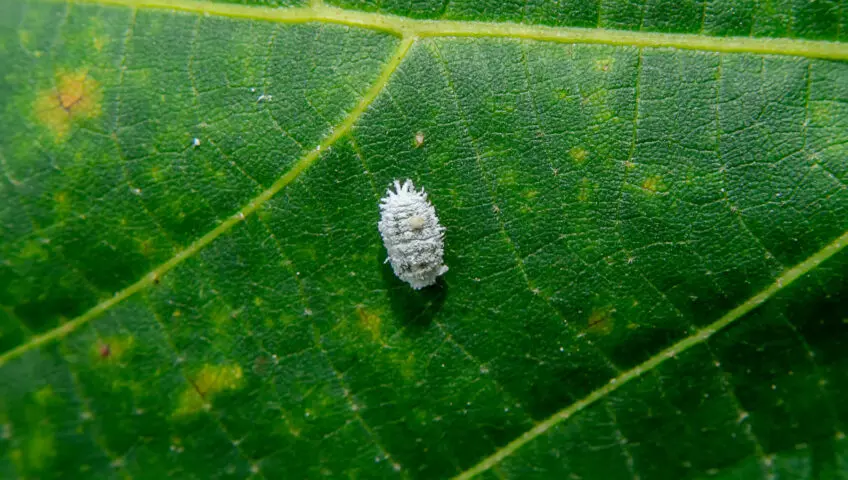Scale can be a serious threat to your landscape. This small insect can quickly devastate valuable trees and shrubs. Do you know the signs of a scale infestation?
Scale bugs attached themselves to the twigs and leaves of a tree or shrub and suck the sap. They excrete honeydew, a sugar-rich substance common to aphids and some varieties of scale. The honeydew coats surfaces underneath the plant, sometimes causing molds to grow on the high sugar content.
This constant loss of sap can stunt the growth of the plant or kill it. It causes leaves to drop and reduces the size of flowers. This is often the first sign of a scale problem.
Look for yellowing or falling leaves. Feel the surfaces under the plants for the tell-tale stickiness of the honeydew. Not all scale insects produce honeydew, so look first for leaf drop and “flagging” (leaf tips turning yellow and drooping). You should also look closely at the surface of the twigs for the small bumps of the scale bug itself. They’re usually small and smooth and may be covered in a protective, waxy substance.
In late summer and early fall, the scale bugs start to crawl away from their delicious twigs to a spot where they can spend the winter in comfort. This is one of the few times horticultural sprays and insecticides will work on this resilient insect.
A better choice is to use a pest control substance applied to the base of the plant and absorbed through its roots. The substance is then distributed through the plant and its sap so the scale bugs eventually ingest it. This approach takes a little longer, but scale bugs are hard to kill with traditional sprays. Their protective outer shell and coating make them a difficult insect to eradicate quickly.
A large population may take several seasons to control. Slug-A-Bug may have to treat for this insect several times. Be persistent and you’ll eventually win the war on scale.
